
Icelandic Runes and Staves | The Complete Guide
Learn about the origin of the ancient Icelandic runes alphabet in this detailed guide. Discover the purpose of Icelandic staves such as Aegishjalmur and Vegvisir. Read on and learn all about these Icelandic Viking symbols and their meanings, mythological foundation, and magical abilities.
Photo from Wikimedia, Creative Commons, by Schwerdf. No edits were made.
- See also: Icelandic Literature for Beginners
- See also: Witchcraft and Sorcery in Iceland
Runes are the characters that make up the ancient writing systems, known as runic alphabets, of various Germanic languages. Before the adoption of the Latin alphabet, runes were the dominant form of writing in Northern, Western, and Central Europe.
The exact origins of runes are debated, but runic archaeological findings date back as far as A.D. 150. Runologists believe the system originated from earlier Old Italic epigraphs such as Old Latin or the Raetic alphabet of Bolzano.
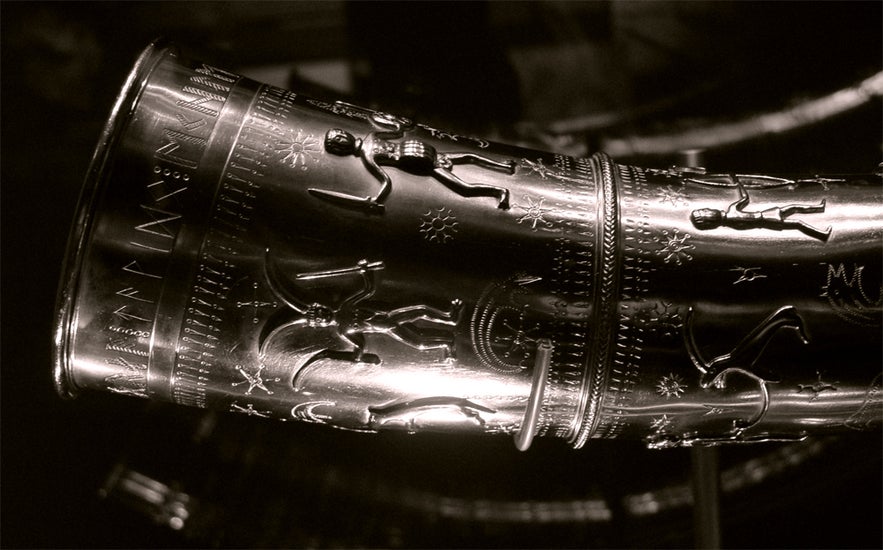
As Europe became Christianised, the Latin alphabet became the dominant form of writing. In Central Europe, this shift occurred around A.D. 700.
However, in the Nordic countries, the runes were still widely used until A.D. 1100, and even longer for specific purposes. Runes, therefore, make up an integral and defining part of Nordic heritage and culture.
Runic writings were imported to Iceland by the country's first settlers and have remained, in some form or another, ever since. More than simply a writing system, the runes are infused with magic and mystery, and these qualities have long since fascinated modern enthusiasts.
Let's explore the history of Icelandic runes, their place in Icelandic culture, their symbols and meanings, and their place in local mythology and folklore.
A Brief History of Runes
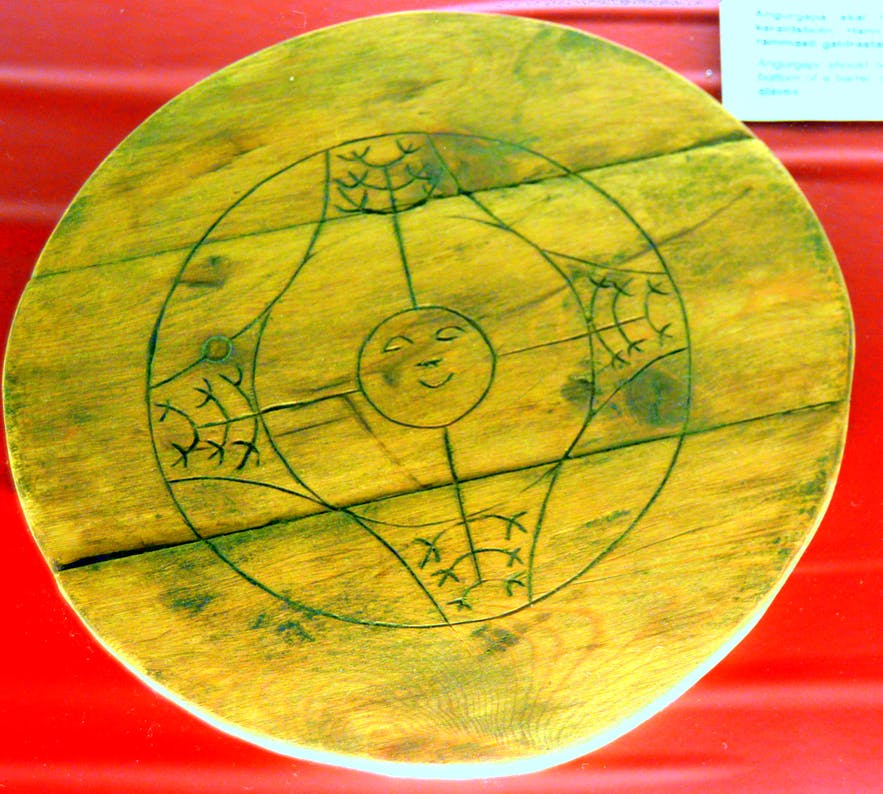 Photo by Regína Hrönn Ragnarsdóttir
Photo by Regína Hrönn Ragnarsdóttir
There's not only one runic alphabet. There are several. They're known as Futhark because their first six letters appear alphabetically.
The first fully-formed of these alphabets is the Elder Futhark, which consists of twenty-four symbols and was in use between the second and eighth centuries. Then, in the late eighth century—or around the beginning of the Viking Age—a shortened variant of only sixteen runes replaced the Elder Futhark in Northern Europe.
This shorter version became known as the Younger Futhark or Scandinavian Runes. Since the Icelandic Age of Settlement began around A.D. 870, the younger version is the Icelandic runic alphabet.
The oldest runes found in Iceland date back to the 10th century, but since both the Eddas and the Sagas frequently mention runes, we know they've been here from the beginning.
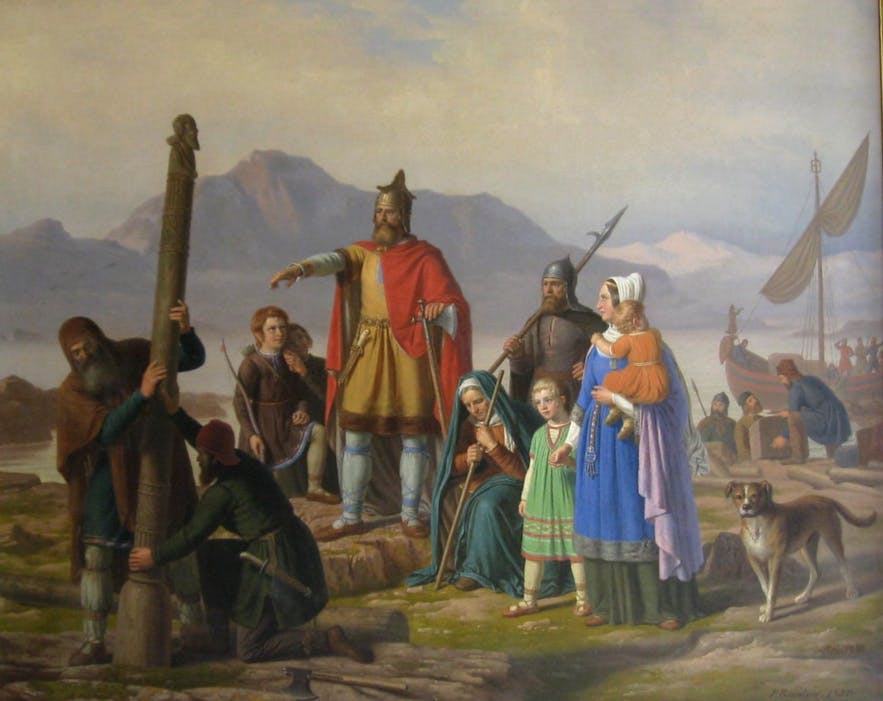
In the eyes of those accustomed to the Latin alphabet, runic symbols can appear perplexing. One symbol can have two or more sounds or even represent whole words or phrases. In this way, they resemble other ancient forms of logographic writing, such as Egyptian hieroglyphs.
Additionally, the characters weren't necessarily written from left to right. Sometimes, runes were written from right to left or top to bottom. They could furthermore change directions or be drawn horizontally as opposed to vertically, and often, strings of words would not be separated by spaces.
Many runologists believe that these variants affected the meaning of the inscriptions. In a nutshell, runic writing was less straightforward and more cryptic than the writing systems we've grown accustomed to today.
 Photo by Regína Hrönn Ragnarsdóttir
Photo by Regína Hrönn Ragnarsdóttir
During the Christianisation of Europe, the church indoctrinated every single man, woman, and child with the word of God. Fundamental to this vehement conversion was an ethnic cleansing that required the copying of large volumes and transcripts, such as the Bible, during the dark ages of the medieval church. Therefore, there was no room for the ancient and mysterious runic writing system.
Additionally, runic characters consisted of straight lines that made them ideal for wood, stone, and bone carvings—the very word "rune" means to carve or cut. As such, the runes were perfect for marking or blessing objects and casting spells but could hardly be used to convey volumes upon volumes of the written word.
During the Viking Age, stories were traditionally passed down verbally, which is why the Sagas were only written down several hundred years after their events took place. In the new world order, the Latin alphabet simply proved more efficient and writing in ink on parchment largely replaced the practice of carving runes on hard surfaces.

The continued practice of runic writing throughout history is largely the result of mysticism and aestheticism. The runes' beautiful imagery was carved on doorways, weapons, and various relics, encompassing blessings and mythical meanings beyond what the Latin alphabet could provide.
For a long time in Northern Europe, both Latin and runic forms of writing coexisted. They both had their particular merits and uses.
For a long time, historians have been fascinated by the fact that Icelandic runes are frequently found on Christian items and artifacts, such as church relics and tombstones. However, according to Norse mythology, runes were gifts from the heathen gods. So does the coexistence of the two writing forms suggest a peaceful coexistence between the two religions?
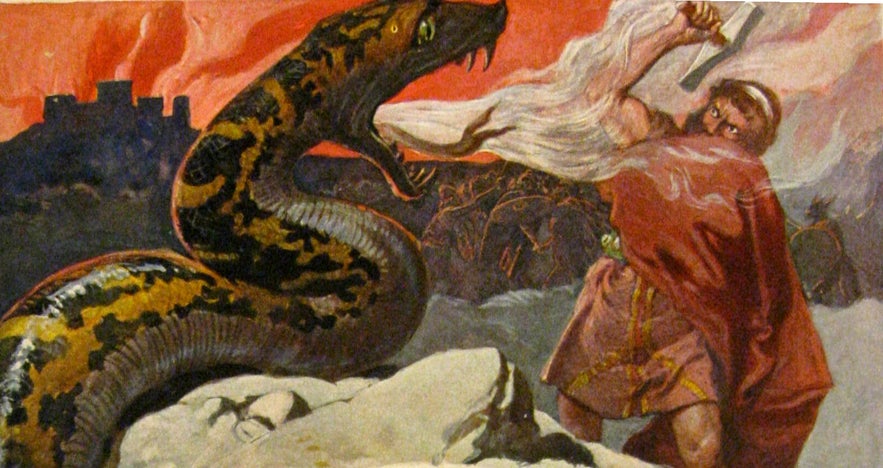
Approximately one hundred archaeological examples of rune carvings in Iceland have been unearthed or preserved to date. These include one of the nation's most treasured relics, the Valthjofsstadur door, a wooden church door dating from around A.D. 1200.
Currently on display in the National Museum of Iceland, the door exemplifies the use of runes as an integral part of everyday life in Iceland, even centuries after the nation had converted to Christianity. Runes were used for decorative purposes until Bishop Oddur Einarsson released the ruling of Kyraugastadadomur in 1592.
The ruling aimed to convert all Icelanders to Lutheran orthodoxy by annihilating and outlawing ancient practices belonging to Catholicism and heathenism. This entailed the complete abolition of magic, or galdur, including the humanitarian practices of healing magic, or laekningagaldur, the medical sciences of old.
Back then, the world's diametric distinctions were different from what they are today. Magic and science weren't two separate entities, but the same, and the runic alphabet was utilized not just as a writing system but also for objective purposes.
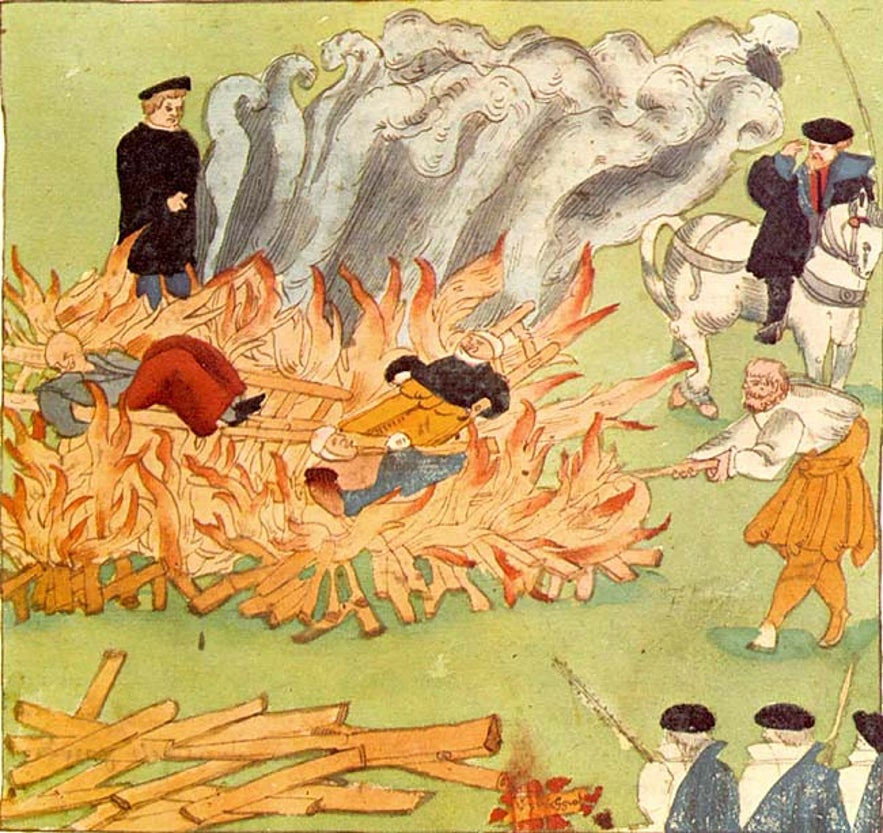 Photo from Wikimedia, Creative Commons, by R. Decker. No edits were made.
Photo from Wikimedia, Creative Commons, by R. Decker. No edits were made.
The outlawing of runes reached its peak during the 1600's Age of Fire, Brennuold, when twenty Icelanders were executed for practicing witchcraft. Intimate knowledge of the runes was enough to earn a person the label of witch or sorcerer.
The Icelandic witch trials differed from their European counterparts in that the victims were primarily men. The first man burned at the stake for witchcraft in Iceland, Jon Rognvaldsson, received his sentence simply for having a few runic scrolls.
- See also: The Most Infamous Icelanders of History
Today, runes constitute a vital part of Iceland's heritage and identity, especially since the foundation of the Asatru Fellowship (a religious association devoted to Norse mythology) in the 1970s.
But what were the magical elements of the runes that worried the church?
The Magic of Runes
Segment from the BBC Documentary' The Sorcerer of Iceland'
Although the Latin alphabet may be more efficient and practical for writing, the runes convey much more than simple sounds and vowels. They're potent symbols that carry great magical properties, handed down from the gods themselves.
- See also: Folklore in Iceland
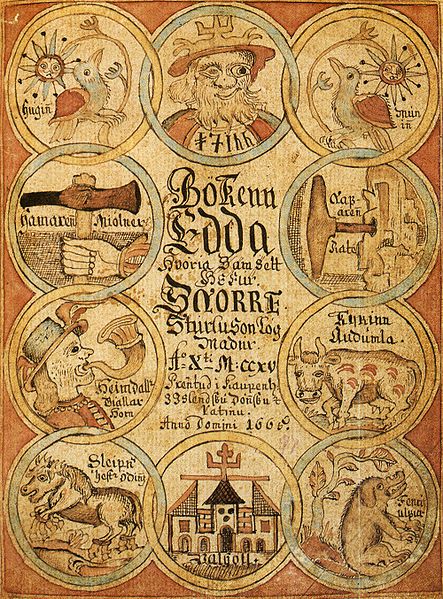
Several heroes of the Icelandic Sagas and Eddas use runes for magical purposes.
Examples are found in Sigrdrifumal, a section of the Poetic Edda, in which the Valkyrie Brynhildur helps the hero Sigurdur on his road to glory by teaching him several magical runes, including:
- Victory runes to be carved on swords before a battle.
- Wave runes to be engraved on the helms of ships.
- Speech runes to prepare one's rhetorical abilities before an assembly (or thing).
These mystic runes often had names that explained their magical purposes, and some of them are traditional Icelandic female names to this day.
For example, Hugrun, composed of the words hugur (mind) and run (rune), was meant to increase one's wit, while Sigrun, consisting of sigur (victory) and run (rune), was meant to help in the winning of battles.
One of the greatest Vikings of the Icelandic Sagas, Egill Skallagrimsson, was a master of runes and their magical properties. This knowledge was vital to his many outstanding abilities.
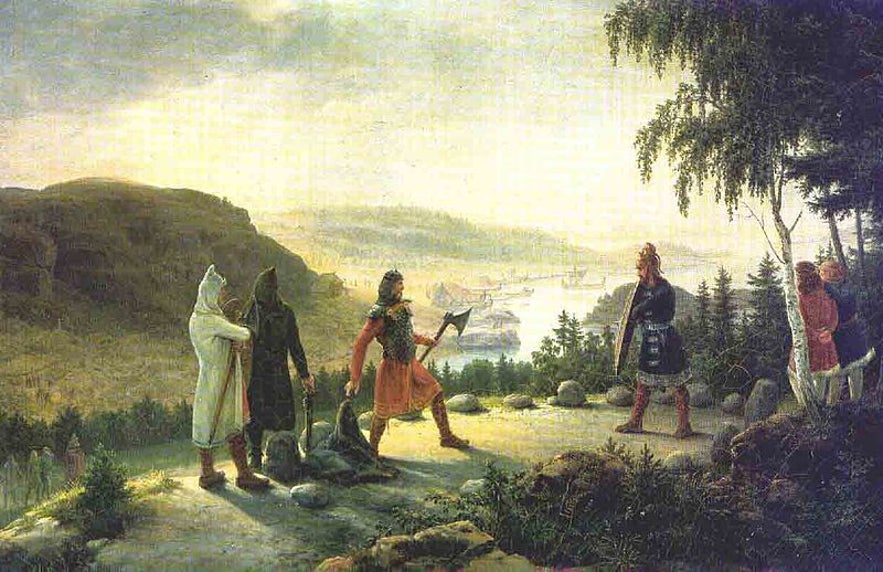
In the Saga of Egill, he visits a farmer's daughter that has fallen gravely ill. Egill notices malevolent runes carved on whalebone above her bedpost. He destroys the runes and carves out new ones, saving the girl's life before noting that runes should only be utilized by those who possess the correct knowledge.
On another occasion in the Saga, Egill uses runes and a protective spell to shatter a poisoned cup meant for him at an enemy's feast. The message of these passages is clear; with runic knowledge comes great power, on par with being a skilled fighter and strong warrior.
In European archaeological discoveries—dating as far back as to the Germanic Iron Age and Anglo-Saxon England—the runic sequence ALU has been found carved on various surfaces of stone, wood, animal horns, and weapons.
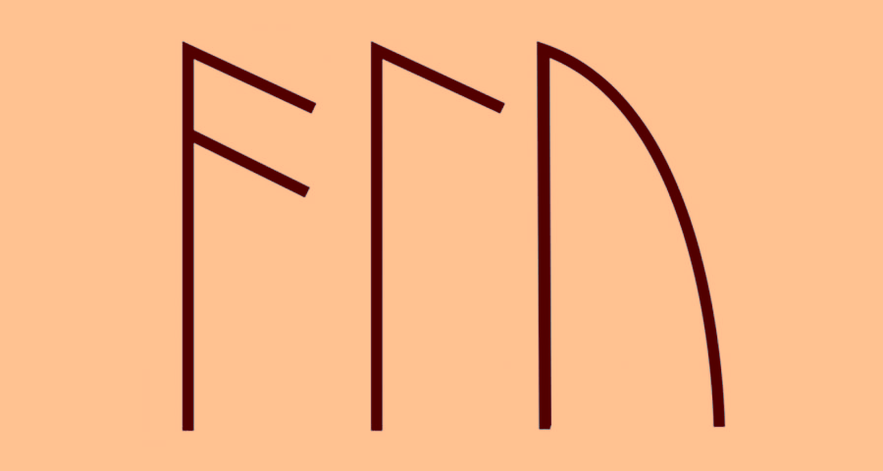
Although the word's exact meaning is disputed, most historians agree that it represents magic and divine inspiration and that the sequence counts as the most common of all runic charm words of old.
ALU appears both alone and as a part of more elaborate formulas. The first letter is called "as" or Ansuz; it's Latinized as "A" and usually represents a god or divinity and a tree, such as oak or ash.
In Norse cosmology, the tree of life, Yggdrasil, grows through the entire world, connecting its nine realms. When you consider that Yggur is one of the many names of Odin, suddenly, the same letter, representing both gods and trees, starts to become coherent.
The carving of a rune carried with it a whole network of symbolism and interconnected meanings, comprehensible only to those who studied them extensively.
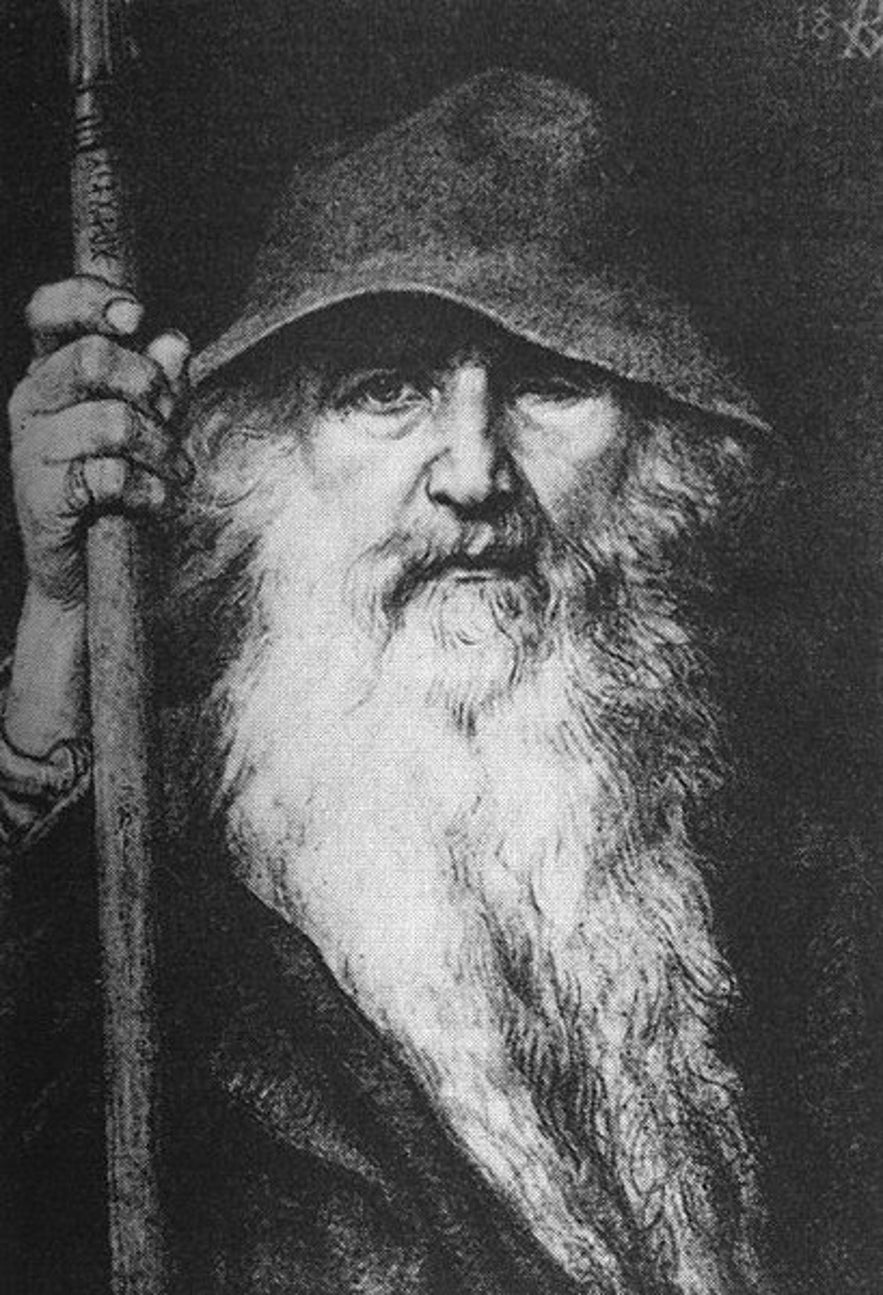
In the Codex Regius poem Havamal, Odin was one such seeker of knowledge. He is said to have endured great physical suffering in exchange for learning the secrets of the runes. For nine days and nine nights, Odin hung from the branches of Yggdrasil, impaled by his own spear and deprived of food and water.
After this great trial, the magic of the runes was revealed to the Allfather. According to the poem, Rigsthula of the Poetic Edda, the god Heimdallr passed down Odin's knowledge of the runes to selected members of the human race.
- See also: Where Did Icelanders Come From?
The Germanic people of ancient times didn't think of the runes as having been invented. Instead, they were seen as pre-existing forces handed down from eternity.
This divine origin of the runes is telling of the power they behold. Each rune carries an ideographic link to a Norse mythological figure, an important animal, or a natural element, and knowing how to read them gives way to wisdom verging on magical abilities.
Icelandic Magical Staves and Runic Readings
Throughout their history, runes were not only used for magical purposes. They were considered intrinsically magical by their very nature. They promoted communication, not only among people but between humankind and deities, allowing for a conversation with the hidden powers that animate the world.
When one gains an in-depth understanding of the characters, one can start arranging them together to increase their power and create potent magical formulas. These more complicated sigils are known as Galdrastafur or "stave."
The spells conducted with these Icelandic symbols were known as seidur, and the practitioners were called seidmenn (male) and visendakona (female). Most of the time, their sorcery consisted of white magic, designed for personal aid and the benefits of others.
Most runic staves were to be carved on specific surfaces, such as a particular metal or wood. After carving, the spells usually required the anointing of the symbols with blood also of a specific type—such as from the little finger of your right hand.
The use of blood might sound morbid, but it's merely representative of the sacrificial aspects of runic knowledge, which is a reference to Odin's original suffering when hanging from the branches of Yggdrasil. To maintain the universe's balance, you have to give something away to get something back.
Let's take a quick look at two of the most popular Icelandic magical staves, their origins, and their powerful uses.
Aegishjalmur

Aegishjalmur, or the Helm of Awe, is probably the most well-known stave in modern Iceland. You'll see it carved into jewelry and printed on T-shirts. It's perhaps the most popular tattoo choice amongst enthusiasts of Nordic culture.
The carving of Aegishjalmur is believed to possess powerful qualities of protection against evil and injustice. It was used by warriors of old to induce fear in their enemies' hearts and prevail in battle. In the Fafnismal poem of the Poetic Edda, the formidable dragon Fafnir uses the stave to defend his treasure from enemies.
Looking at the symbol, one can easily imagine eight arms or tridents reaching out from a central point and shielding it. The arms bear the appearance of the Madr rune (Latin M or Mannaz) in the Younger Futhark or the Elgr rune (Latin Z or Algiz) in the Elder Futhark.
The former represents man or humanity, while the latter is an elk whose horns stand for courage, power, and defending oneself against predators.
An example of utilizing this stave with a spell is found in Jon Arnason's collection of Icelandic Folk Tales and Fairytales. There, one is instructed to carve the helm in lead, press it between one's eyebrows, and speak the following spell:
“Aegishjalm er eg ber, milli bruna mer.”
("I bear the helm of awe between my brows.”)
Try it out before your next confrontation with an adversary, and notice your heart filling with courage and your spirit soaring towards victory.
Vegvisir

Vegvisir, or Wayfinder, is a stave born out of Icelandic conditions. Its purpose is to aid its bearer through rough weather and storms—helping whoever carries it to find his way home in unfamiliar surroundings.
This rune stave is quite popular today, despite it only being found in a single collection of spells, the Huld Manuscript, assembled by Geir Vigfusson in 1860. They gathered its material from earlier times. Since no other collection showcases this stave, its age is unknown, although it's not considered very ancient.
The Wayfinder has been called a Runic Compass due to its appearance. But as is imminent from the Helm of Awe, many rune staves form an eight-pointed wheel, so this is most likely coincidental. The spirals are more varied in the Wayfinder and harder to interpret, but the Madr (man) rune is distinctly visible again.
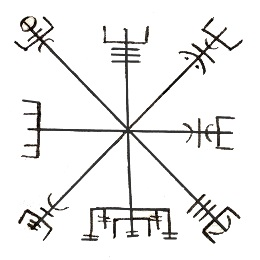
This verse from the Poetic Edda's Havamal might shed some light on the symbol's runic significance:
“Ungur var eg fordum, for eg einn saman, tha vard eg villtur vega;
Audigur thottumk, er eg annan fann, madur er manns gaman.”
("Young was I once, I walked alone, and bewildered seemed in the way;
Then I found me another and rich I thought me, for man is the joy of man.”)
For what better way is there to find one's way than with the help of a fellow human being?
Icelandic Runes for Fortune Telling
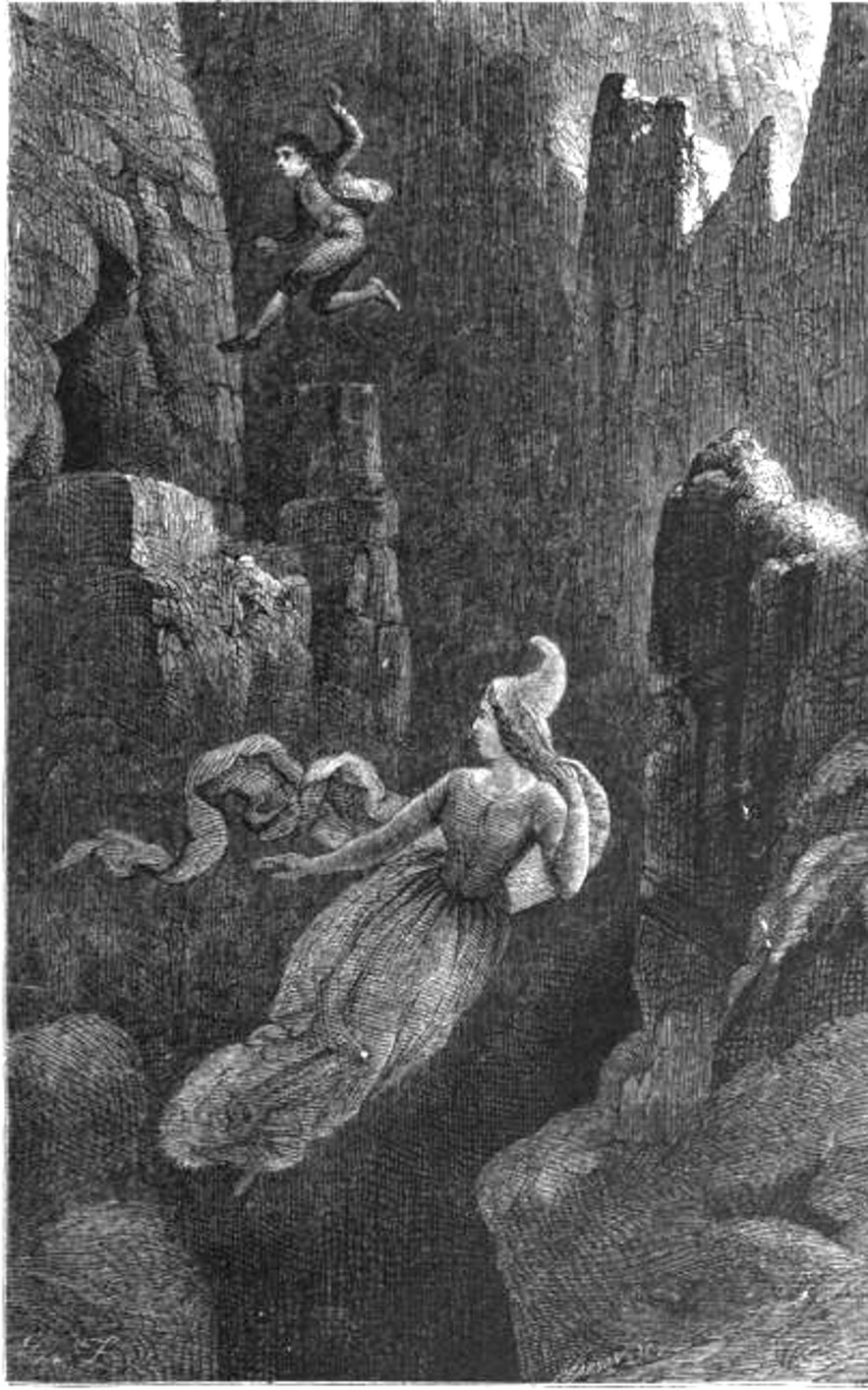 Photo from Wikimedia, Creative Commons, by Johann Baptist Zwecker. No edits were made.
Photo from Wikimedia, Creative Commons, by Johann Baptist Zwecker. No edits were made.
Since most runic spells were aimed at winning battles and obliterating illnesses or curses, their purposes could be considered somewhat obsolete in today's age. However, foreseeing one's possible future remains a focal point of interest in modern societies.
The utilization of runes to read the future could be described as coinciding with the customs of tarot card readings or astrological chartings. These readings don't offer any clear answers but rather instructions on how the subject's future can be met or affected.
There are several ways of going about this practice, but let us examine the reading of one rune at a time to introduce how to interpret the answers provided. When reading prophecies through runes, three representatives from Norse mythology provide three different guidelines.
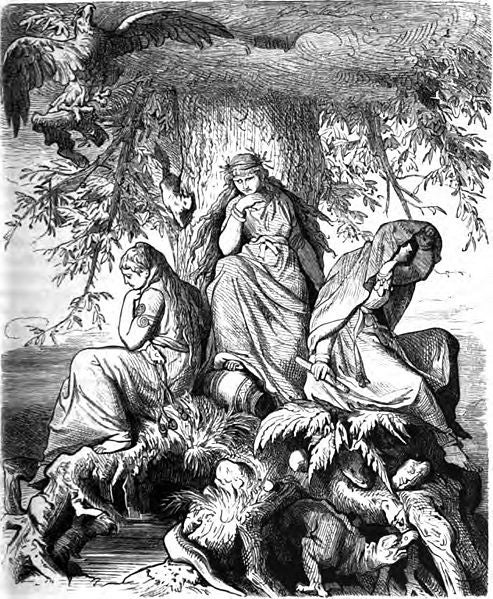
The first is a trio of foreseeing Norns known as Urdur, Verdandi, and Skuld. In Norse lore, these women are in charge of the destinies of gods and men as they spin the threads of fate at the foot of the world tree, Yggdrasil.
The second representative is the hawk Vedurfolnir, who glides above Yggdrasil's branches representing all that is good and noble. His readings of the runes tell of the positive aspects of the prophecy at hand.
The third and final creature is Nidhoggur, a serpent who feeds off the tree's roots as well as the bodies of dead men. This dark creature serves as Vedurfolnir's opposite and warns the subject of the negative aspects of the prophecy in question.
Let's try this out. Say you possess a collection of stones, each engraved with a rune. You reach for one, and the destinies hand you the letter Jor (Latin E or Ehwaz).
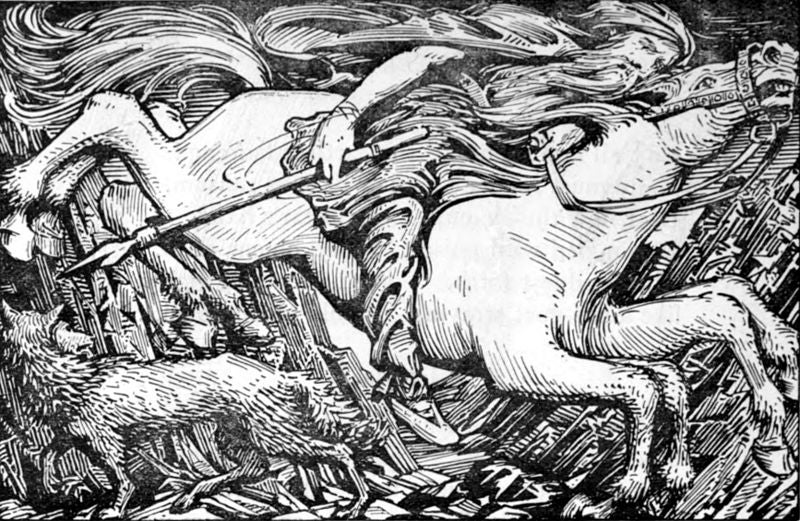
This is the rune of Sleipnir, Odin's eight-legged horse. The rune then represents movement or a journey, either in the literal form of traveling or perhaps as an inner journey of the mind.
The Norns would tell you your life is about to move forward, that things are on the verge of change, and barriers are about to be broken. Vedurfolnir would advise you not to fear the unknown, to grab whatever chances come your way, and to be steadfast on your travels. Lastly, Nidhoggur would tell you to be wary of impatient acts such as recklessness or folly.
The wisdom of runic readings lies within the subject self-reflecting on their nature or environment, bearing in mind there's always more than one route to each destiny or destination.
Runes in Modern Iceland
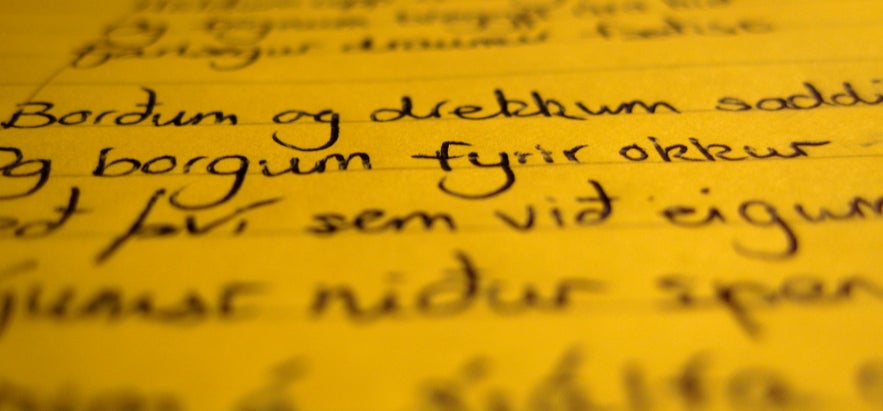
The Icelandic alphabet of today is a Latin one, with the addition of ten extra letters in comparison to the English alphabet. Some are simply Latin letters with acute accents, but some are letters in their own right, known as serislenskir (specifically Icelandic) characters.
Out of these, Þ is quite literally a runic letter. It has been present in many historical languages, including Old Norse and Old English, but today it's not a part of any living language except Icelandic. Þ was widely replaced with Th since it's pronounced as such, for example, in the English word "theater."
The rune that birthed this letter is the Þurs or Thurisaz rune, belonging to Thor's hammer Mjolnir, which the thunder god used to slay the giants of Norse mythology known as þursar. This rune represents awe, terror, destruction, or conflict in runic reading.
In Icelandic, a softer version of Þ is Ð, pronounced like Th in "they." It was interchangeably used with Þ in Old English, but unlike Þ, Ð is a modified Roman letter as opposed to a runic character.
Another notable character in the Icelandic alphabet is Æ (pronounced Ai). The letter comes directly from the Old English alphabet, but as such, its origin is the Anglo-Saxon Futhorc rune as or Ansuz—the rune of Odin and the ash tree Yggdrasil.
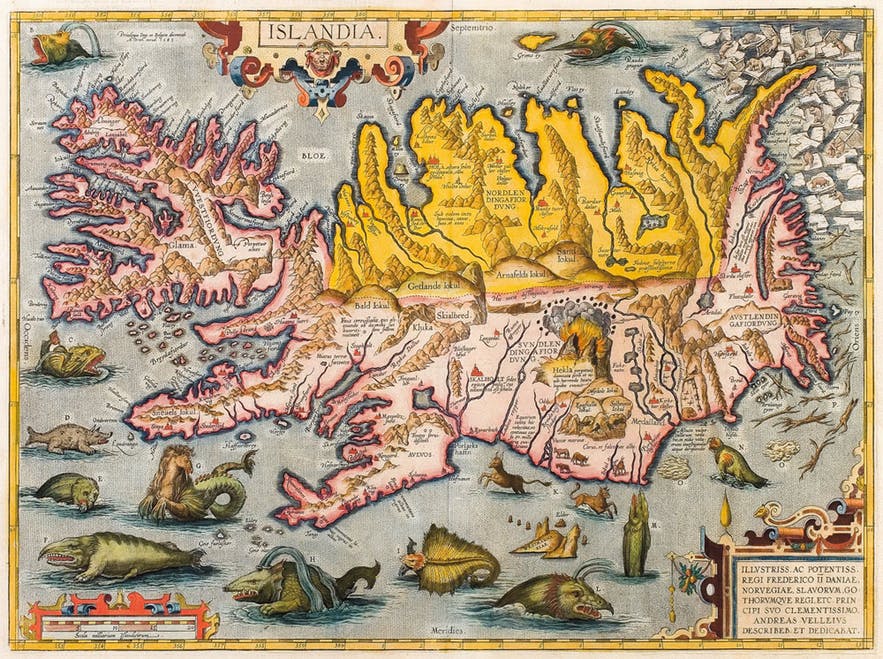
The word as still represents the Norse gods in Icelandic, and the plural of that word takes the form of Æsir, pronounced ice-ir. Some have even suggested that Iceland got its name not from the natural elements of ice and snow, but the very gods the country's first settlers worshipped.
The Icelandic magic runes represent the power of the spoken and written word, the competency of knowledge, and the brimming symbolism of mythical entities. Iceland was founded on these symbols, the Sagas boast of their powerful qualities, and legendary folk tales tell of their hidden sorcery.
Runes represent a writing system that dates back near two thousand years. Nevertheless, they're still visible today in Iceland's heritage, history, culture, and language. In all likelihood, and in some form or another, the runes and their magic will always reside with the Icelandic people.
Did you enjoy our guide to Icelandic runes? What's your favorite magic stave? Tell us your thoughts by writing in the comments box below!
Other interesting articles
The Ultimate Guide to Getting Married in Iceland
Do you want to have your wedding in Iceland? What do you need to do before tying the knot in Iceland? Are you planning on a private elopement or searching for Icelandic wedding packages? Read on to...Read moreFunniest Mistakes Tourists Make in Iceland
What are the funniest things tourists have done in Iceland? Read about some hilarious mistakes tourists (and locals) have done on their travels in Iceland! Explore Vacation Packages in Iceland Tak...Read more
The Ultimate Guide to Turf Houses in Iceland
What are Icelandic turf houses? How were they built, what were they like to live in, and when did they stop being used? Are there any historical turf houses left in Iceland, and where can you find t...Read more

Download Iceland’s biggest travel marketplace to your phone to manage your entire trip in one place
Scan this QR code with your phone camera and press the link that appears to add Iceland’s biggest travel marketplace into your pocket. Enter your phone number or email address to receive an SMS or email with the download link.






















